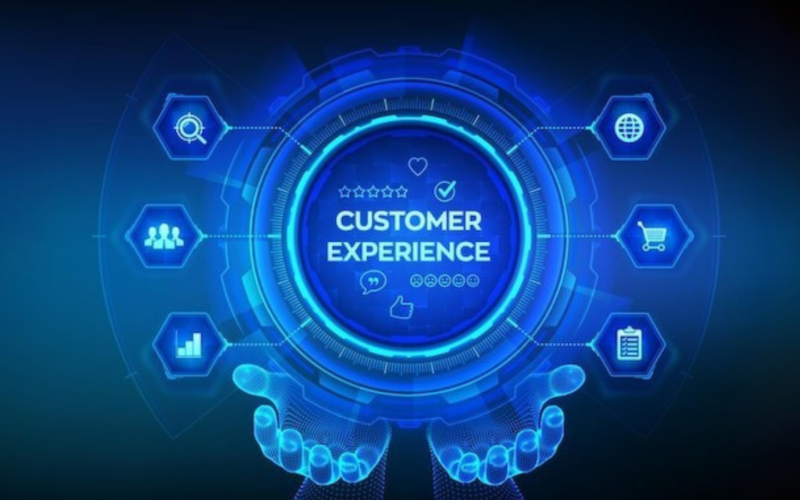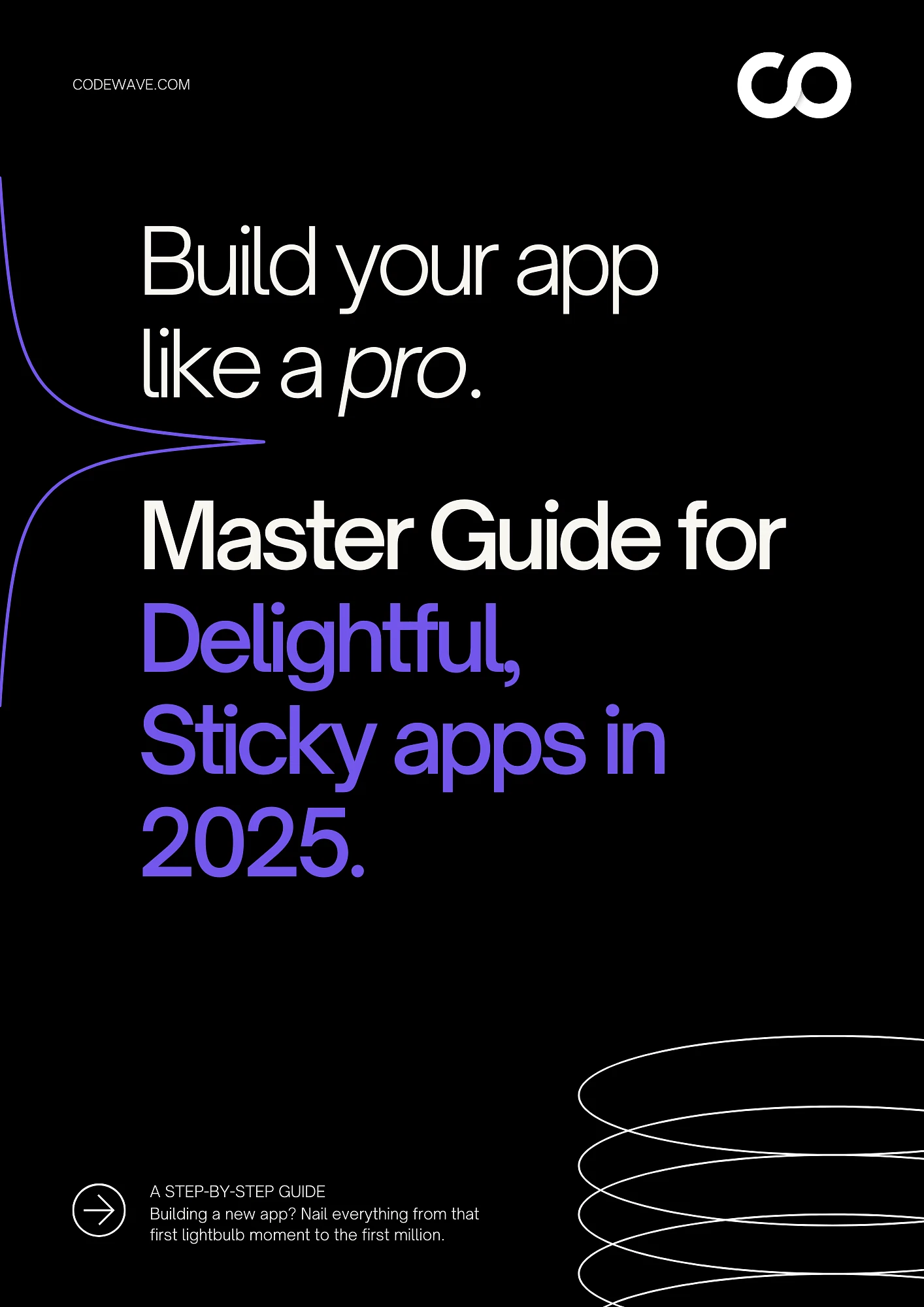Did you know that over half of Australian consumers would switch brands if their digital experience falls short? According to a national survey by Publicis Sapient, 53 percent of customers would walk away if their expectations aren’t met, and that’s a huge risk for your business.
You’ve probably faced the frustration of losing customers or struggling to stand out in a crowded market. The good news? CX design is the solution you’ve been looking for.
In this article, you’ll learn how to exceed customer expectations and boost retention, loyalty, and revenue with experiences that truly resonate.
Key Takeaways
- CX Design: It’s about creating seamless, personalised experiences across every touchpoint to build customer loyalty and satisfaction.
- Strategies: Define clear goals, map the customer journey, identify pain points, and test improvements to create an effective CX strategy.
- Tools: Leverage tools like CRM systems, journey mapping platforms, and automation to optimise customer interactions and drive results.
- Mistakes & Tips: Avoid ignoring the full customer journey, overcomplicating processes, and inconsistent branding. Focus on simplicity, feedback, and personalisation.
- Codewave: Codewave’s cx design services help businesses implement tailored, seamless customer experiences that boost engagement, loyalty, and overall success.
What is Customer Experience Design?
3 out of 4 Australian shoppers changed their shopping habits in the last year, and 65% are willing to pay more for standout retail experiences, driving omnichannel investment. This shift highlights a key trend: customers now expect seamless, engaging experiences at every touchpoint.
But what exactly is CX design?
It’s the art and science of crafting these interactions to ensure they not only meet but exceed customer expectations. From the first impression to post-purchase follow-ups, customer experience design shapes how consumers feel about your brand and how likely they are to return.
To create a great customer experience, there are some key principles you’ll want to follow. These guide every decision and action you take in the design process.
- Understand the customer journey: Mapping out each step a customer takes with your brand helps you spot pain points and opportunities.
For instance, a business that realises its website navigation is too complicated can redesign it for smoother flow, resulting in happier customers.
- Personalisation: Customers expect experiences that feel tailored to them. A quick email with relevant product recommendations based on previous purchases can create a connection that makes them return.
- Consistency across channels: Whether your customer interacts with you online or in-store, they should feel the same level of care and attention.
If someone books a service on your website, the in-store experience should be just as easy and welcoming.
- Embrace feedback: It’s crucial to keep an ear to the ground. Actively listening to your customers, whether through surveys or direct messages, can highlight what’s working and what isn’t.
When you act on their feedback, you show you care about their experience.
Customer experience design (CX) is often confused with traditional user experience (UX) or product design. While they share some similarities, there are key differences.
Here’s a quick comparison to help you see how they diverge:
| Aspect | Customer Experience Design (CX) | User Experience Design (UX) |
| Focus | Encompasses all touchpoints with the brand, from first contact to post-purchase. | Focuses on how users interact with a specific product or service. |
| Scope | Broader, involving emotional connection and brand perception. | Narrower, focused on usability and functionality. |
| Goal | Aims to create loyalty through positive long-term relationships. | Aims to ensure the product is easy to use and functional. |
| Time Frame | Long-term focus builds over time with every interaction. | Short-term focus; each interaction is about task completion. |
| Emotion | Strong emphasis on customer emotions and brand sentiment. | Focuses on practical satisfaction and task efficiency. |
| Customer Journey | Covers the full customer journey, including sales, service, and support. | Usually looks at a specific stage, like product discovery or checkout. |
Struggling to improve your customer experience? Explore Codewave’s Customer Experience Design services to craft seamless, engaging interactions that boost loyalty and satisfaction. Start improving your customer experience today!
With these principles in mind, let’s dive into how you can turn these ideas into a practical strategy that truly drives results.
Steps to Create an Effective Customer Experience Strategy
Trust, transparency, and data protection are non-negotiable. CX strategies must satisfy the Australian Privacy Principles (under the Privacy Act 1988) and align with administrative guidelines from the ACCC, especially on pricing, communications, and complaint handling.
But building a customer experience strategy goes beyond just legal compliance. It’s about crafting an experience that delights at every touchpoint, from first interaction to long-term relationship.
Here’s how to build one that works for your business:
1. Define clear goals and KPIs
Before jumping into the strategy, clarify what you want to achieve. Set measurable targets so you can track progress and make adjustments. Some KPIs to consider:
- Customer Satisfaction (CSAT): Measure customer satisfaction after each interaction.
- Net Promoter Score (NPS): Gauge customer loyalty and likelihood of recommending your business.
- Customer Retention Rate: Track how many customers return over a specific period.
- Customer Lifetime Value (CLTV): Calculate the total revenue a customer will generate over their relationship with your brand.
- First Response Time: Measure how quickly your team responds to customer inquiries.
2. Map the customer journey
Understanding the full path your customers take with your business helps you pinpoint opportunities to improve their experience. A typical journey might look like this:
- Awareness: The customer learns about your product or service through an ad, word-of-mouth, or a search.
- Consideration: They explore your website, read reviews, or speak to salespeople.
- Purchase: They buy the product, either online or in-store.
- Post-Purchase: They engage with customer service for support or have follow-up interactions.
- Loyalty: The customer returns for repeat purchases or becomes a brand advocate.
3. Identify pain points and opportunities
Pinpoint where customers face challenges in their journey, and look for ways to improve:
- Website navigation issues: If customers can’t easily find what they need, it’s a clear pain point.
- Long response times: Slow customer support can frustrate customers and drive them to competitors.
- Lack of personalisation: Generic, one-size-fits-all experiences can leave customers feeling disconnected.
- Missed opportunities: Are there moments where you can delight customers, such as offering product suggestions at checkout?
4. Implement and test design improvements
After identifying pain points, take action and test the changes you make:
- Streamline the checkout process: Simplify the steps to purchase to reduce cart abandonment.
- Improve communication channels: Implement live chat or quicker support options.
- Personalise the experience: Use customer data to suggest relevant products or services.
- Test and optimise: Implement A/B testing to see which changes have the most impact on customer satisfaction.
Struggling to ensure a seamless customer experience? Explore Codewave’s QA Testing services to guarantee your cx design is flawless, functional, and delivers a smooth, error-free journey for your customers. Start enhancing your customer experience today!
5. Measure success and adjust
After implementing changes, regularly measure how well your strategy is working:
- Track KPIs: Refer back to your defined KPIs to see if they’re improving.
- Customer feedback: Use surveys or reviews to get direct insights from your customers.
- Make continuous improvements: Adjust your strategy based on what’s working and what’s not.
With the strategy in place, let’s look at the tools and technologies that can help you bring it all to life and streamline the process.
Tools and Technologies for CX Design
To execute your CX strategy effectively, you need the right tools. These help you map journeys, personalise interactions, and optimise every touchpoint. Here, we’ll highlight the essential technologies that make customer experience design easier and more impactful.
- Customer Journey Mapping Tools: Visualise the entire customer experience with tools like Smaply or Lucidchart, which help you identify touchpoints, pain points, and opportunities for improvement.
- Customer Relationship Management (CRM) Systems: Centralise customer data with platforms like Salesforce or HubSpot to personalise interactions, track history, and manage relationships more effectively.
- Survey and Feedback Tools: Collect real-time feedback using tools like SurveyMonkey or Qualtrics, allowing you to gather insights directly from customers and adjust strategies accordingly.
- Analytics and Reporting Platforms: Analyse customer behaviour and experience with Google Analytics, Mixpanel, or Hotjar. These tools provide data-driven insights to inform decision-making.
- Live Chat and Chatbot Tools: Offer immediate support with Intercom, Zendesk, or Drift to improve real-time customer interactions and reduce response times.
- Personalisation Engines: Enhance the user experience with Optimizely or Dynamic Yield, which tailor content, product recommendations, and offers based on customer preferences.
- Automation and Workflow Tools: Automate customer interactions and follow-ups using platforms like Zapier or Marketo, streamlining your CX processes and saving time.
- Customer Support Platforms: Provide efficient support and track issues with systems like Freshdesk or Zoho Desk, ensuring your customer service is responsive and consistent.
With the right tools in place, let’s take a look at the common pitfalls to avoid, ensuring your strategy doesn’t fall short.
Common Mistakes in Customer Experience Design
Even with the best strategy and tools, it’s easy to make mistakes in customer experience design. These missteps can lead to frustration, disengagement, and missed opportunities.
Here’s a look at some common errors businesses make, along with tips on how to avoid them:
1. Neglecting the Customer Journey
Many businesses focus too heavily on a single touchpoint, like the website or checkout process, without considering the whole customer journey.
Tip: Map out the entire journey from awareness to post-purchase to identify gaps and opportunities. Ensure consistency across every interaction.
2. Overcomplicating the Process
A cluttered website, complex checkout, or lengthy customer support processes can overwhelm customers.
Tip: Keep things simple. Streamline navigation, simplify forms, and make it easy for customers to get the help they need quickly.
3. Ignoring Personalisation
Treating all customers the same can lead to missed chances for deeper engagement and increased sales.
Tip: Use customer data to personalise content, recommendations, and communications. Tailor the experience based on individual preferences and past interactions.
4. Failing to Gather Customer Feedback
Without regular feedback, it’s hard to know where your CX stands and what needs improvement.
Tip: Use surveys, reviews, and direct feedback to understand customer pain points and expectations. Act on this information to refine your strategy.
5. Inconsistent Brand Experience
If your branding, tone, or service quality changes across different channels, customers can become confused or frustrated.
Tip: Ensure a consistent brand voice, design, and quality of service across all touchpoints, whether online or offline.
6. Ignoring Mobile Optimisation
With more customers engaging through mobile devices, ignoring mobile optimisation can alienate a large portion of your audience.
Tip: Ensure your website and apps are mobile-friendly, fast, and easy to navigate.
7. Lack of Post-Purchase Engagement
Focusing only on the sale and neglecting post-purchase interactions can hurt long-term loyalty.
Tip: Follow up with customers after their purchase. Ask for feedback, offer helpful tips, and create loyalty programs to keep them coming back.
Struggling to optimise your UX & UI design? Explore Codewave’s expert UX & UI Design services to create intuitive, user-friendly interfaces that enhance customer engagement and satisfaction. Start transforming your user experience today!
By focusing on customer experience design, you can turn every interaction into an opportunity to build trust and loyalty. With the right strategy, tools, and attention to detail, you’ll create lasting relationships that drive growth for your business.
Why Choose Codewave for Customer Experience Design?
When your business is ready to elevate its customer experience, you need more than just a basic solution. At Codewave, we go beyond standard offerings by transforming your vision into a tailored, AI-powered customer experience strategy that is seamless, data-driven, and customer-centric.
Our CX design approach combines advanced analytics, real-time customer insights, and intuitive interfaces to create solutions that improve engagement, loyalty, and satisfaction.
Curious to see how Codewave’s customer experience design solutions can transform your business? Explore our portfolio to discover how we’ve helped companies like yours create more engaging, seamless, and impactful customer experiences.
What You Get with Codewave’s Customer Experience Design Solutions:
- 60% Improvement in Engagement: Struggling with slow or inefficient customer interactions? Our streamlined processes enhance engagement and deliver faster, more effective responses.
- 3x Faster Implementation: Frustrated with long timelines for deploying CX solutions? We get your strategy up and running in record time, reducing delays and boosting productivity.
- Save Up to 3 Hours Weekly: Tired of spending too much time on repetitive tasks? Our automation frees up your team to focus on high-impact customer interactions, saving valuable time.
- 25% Lower Costs: Concerned about escalating development costs? Codewave’s smart automation cuts expenses while maintaining the quality of your customer experience.
Our Services Include:
- CX Strategy Consultation: We assess your current customer experience approach and create a customised roadmap that aligns with your business goals, ensuring scalability and long-term success.
- CX Solution Design & Development: From concept to deployment, we design and implement AI-driven customer experience tools that enhance engagement, loyalty, and satisfaction.
- Integration with Customer Systems: We connect CX solutions with your existing CRM, marketing platforms, and support systems to ensure seamless, real-time data flow.
- Interactive Dashboards & Analytics: We provide intuitive dashboards that transform CX data into actionable insights, helping you track performance and make quicker, data-driven decisions.
Curious to see how your customer experience can truly transform? Book a session with Codewave’s experts and discover how we can turn your CX strategy into measurable results.
FAQs
Q. What are the first steps in improving my business’s customer experience?
A. The first step is understanding your current customer experience and identifying pain points. This can be done by collecting customer feedback through surveys, reviews, and analysing data. From there, focus on mapping the customer journey to spot areas where you can streamline processes and enhance engagement. A solid cx design approach will guide you in crafting a strategy that addresses these issues and delivers a seamless experience.
Q. How do I ensure that my customer experience strategy aligns with my business goals?
A. To align your customer experience strategy with your business goals, start by defining clear objectives. These could range from improving customer retention to increasing sales or enhancing brand loyalty. Then, tailor your cx design efforts to support these objectives. Make sure your strategy integrates with other areas of the business, such as marketing and sales, ensuring every department is working towards the same goals.
Q. How can I effectively measure the success of my customer experience initiatives?
A. Success can be measured using specific KPIs such as customer satisfaction (CSAT), Net Promoter Score (NPS), customer retention rates, and customer lifetime value (CLTV). These metrics help you understand how well your cx design strategy is performing. Regularly track these figures, compare them against your goals, and adjust your approach based on the data to continuously improve the experience.
Q. Can a strong customer experience help my business stand out in a crowded market?
A. Absolutely. In today’s competitive market, offering a strong, personalised customer experience is a key differentiator. A well-executed cx design strategy makes your brand memorable and builds customer loyalty, helping you retain clients and attract new ones. By consistently providing exceptional service at every touchpoint, you’ll set yourself apart from competitors who may not prioritise the customer experience as highly.
Q. How can I incorporate customer feedback into my CX design?
A. Collecting and acting on customer feedback is critical for a successful cx design. Use surveys, online reviews, or direct customer interactions to gather insights on what works and what doesn’t. This feedback should be analysed regularly and integrated into your customer experience strategy, allowing you to make data-driven improvements. By listening to your customers, you show them you care about their needs and are committed to providing a better experience.
Codewave is a UX first design thinking & digital transformation services company, designing & engineering innovative mobile apps, cloud, & edge solutions.







